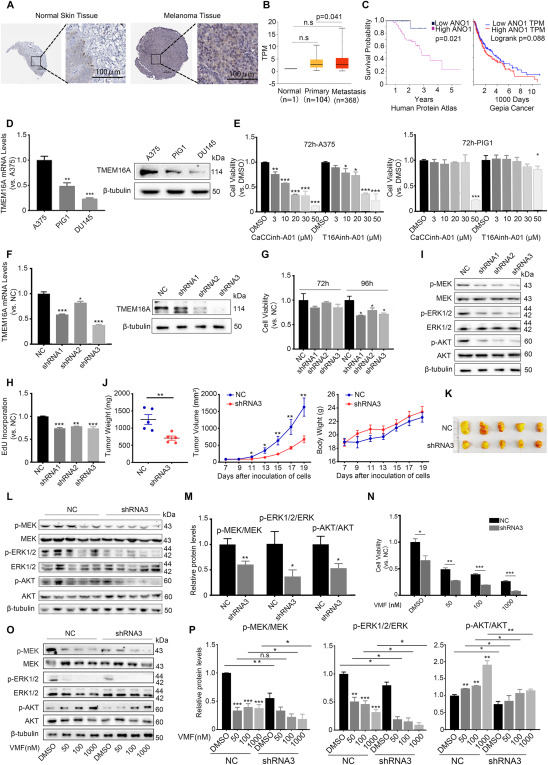
Targeting TMEM16A/ANO1 inhibits the progression of BRAF mutant (V600E) melanoma through the MEK/ERK and AKT signaling pathways


The BRAF (V600E) mutation is common in malignant melanoma patients and drives constitutive activation of the MEK/ERK signaling pathway and cancer progression.1 To date, precision therapies targeting the BRAF/MEK/ERK pathway, including BRAF inhibitor (BRAFi) monotherapy using vemurafenib (VMF) and dabrafenib and combination therapy using dabrafenib and the MEKi trametinib, have been developed and have led to great advances in malignant melanoma therapy.2 Unfortunately, many tumors initially responsive to these drugs develop resistance, which leads to patient death. Therefore, the exploration of alternative targets is important and urgently needed to improve the treatment of malignant melanoma patients. Studies have shown that abnormally high expression levels of TMEM16A (also called ANO1), a calcium-activated chloride channel (CaCC), contribute to the occurrence and proliferation of many kinds of tumor cells.3 Here, we report that TMEM16A/ANO1 is significantly up-regulated in A375 human malignant melanoma cells, which carry the BRAF(V600E) mutation. In vitro, inhibition of TMEM16A by two CaCC inhibitors (T16Ainh-A01 and CaCCinh-A01) and shRNA-mediated knockdown of TMEM16A suppressed the proliferation of A375 cells. In vivo, the growth of engrafted A375 tumors in nude mice was mitigated by TMEM16A knockdown. Mechanistically, the activation of the MEK/ERK and AKT signaling pathways was inhibited.
